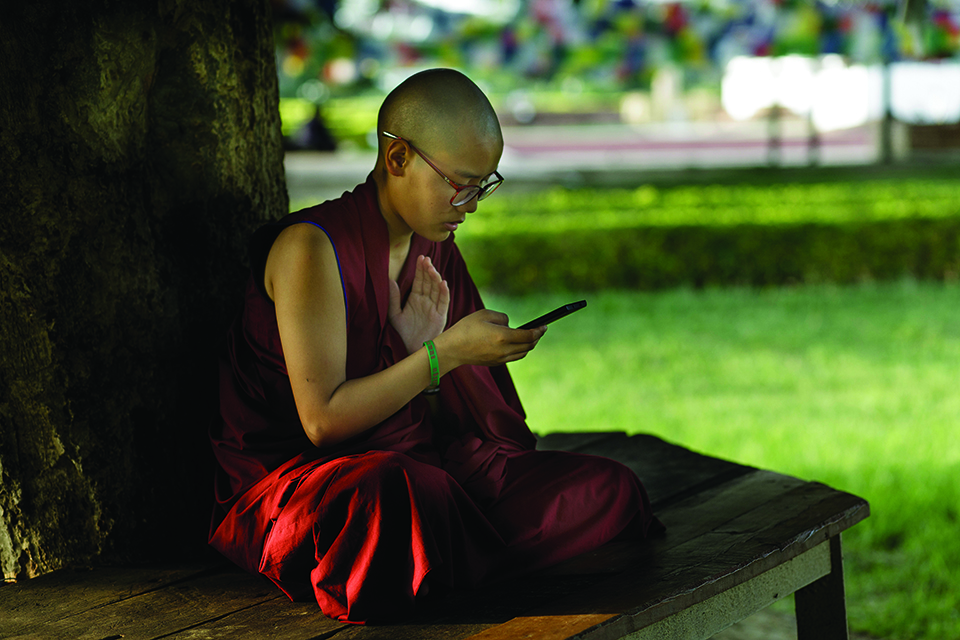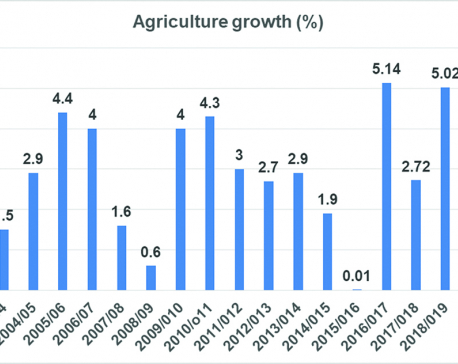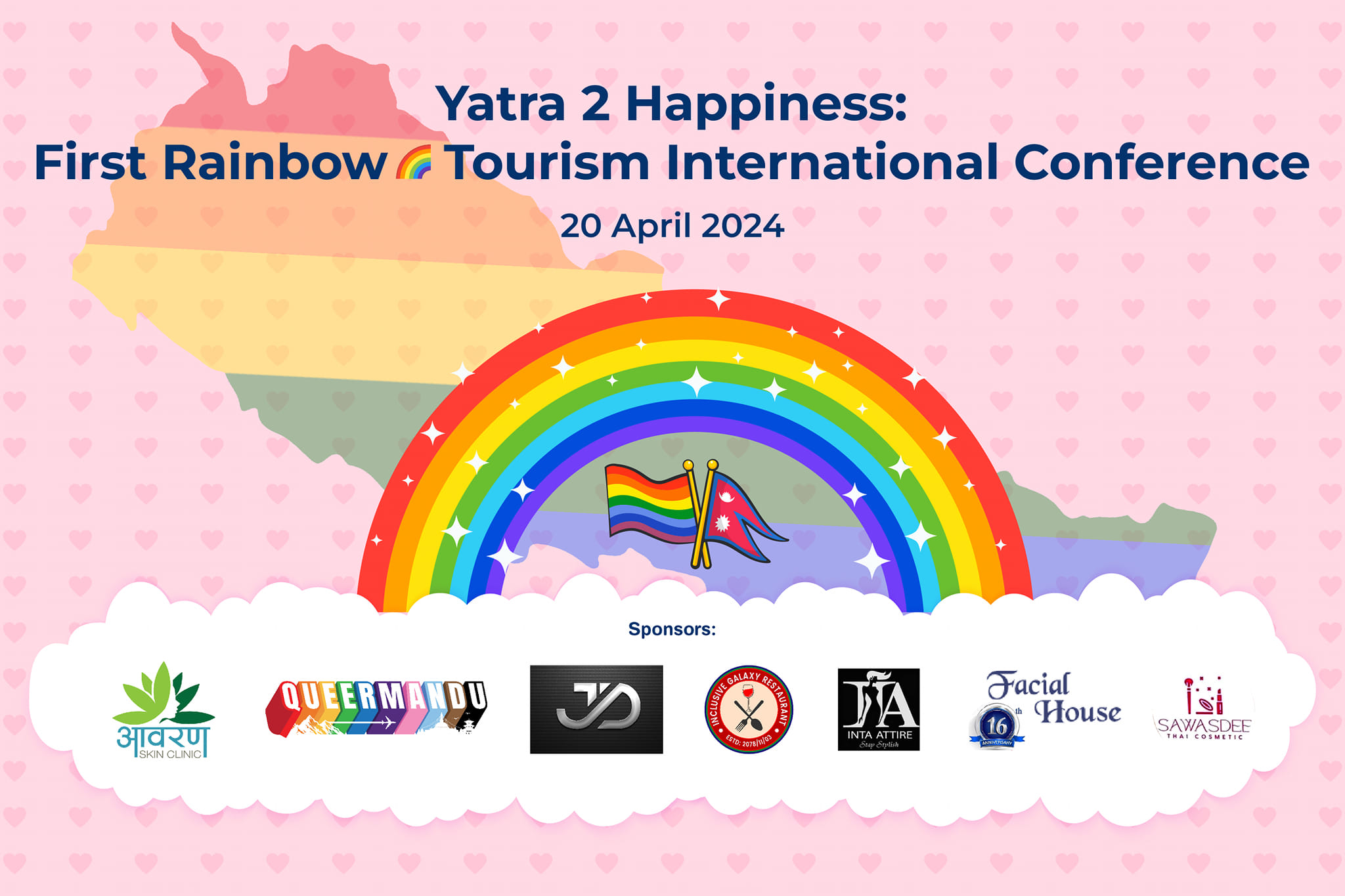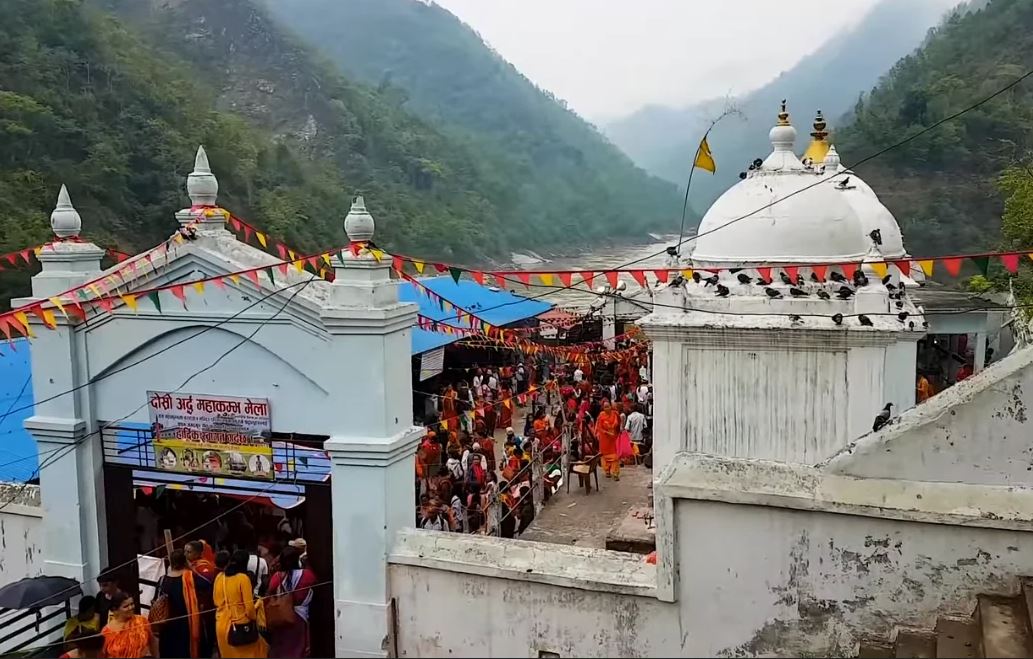
OR
Campaign for Buddhist tourism
Published On: May 15, 2019 01:30 AM NPT By: Dharma Adhikari and Juyan Zhang


Dharma Adhikari and Juyan Zhang
Adhikari has been a long-time media columnist with Republica. Currently, he is an associate professor of journalism at Shantou University, China. Zhang is an associate professor of communication at the University of Texas at San Antonio, USAnews@myrepublica.com
More from Author
Buddha’s legacy has been monopolized by India. Nepal needs to reclaim the Buddha and his legacy as a fundamental part of nation’s identity and narrative. Our history is inseparable from Buddhism
In our previous article (“Branding Buddha’s Birthplace”, Republica, May, 8), we showed that Nepal has rich resources and a great potential to become a global Buddhist tourism hub. Here, we propose policy recommendations regarding the goals, narratives, positioning, messages, strategies and tactics on the Buddhist tourism campaign that Nepal should launch.
The campaign should enlist organizers for the task. It should fully involve the Ministry of Culture, Tourism and Civil Aviation and its Department of Tourism, local governments, diplomatic missions, travel agencies, world Buddhist entities, celebrities, international media, and world tourist and pilgrim societies.
A special governmental or semi-governmental council may be created to coordinate and implement the Buddhist tourism plan. The council could be modeled after the mentors’ group formed to revive the Nalanda University in India.
Campaign goals
The campaign planners must envision a long-term outcome. The goals may include reputation management, relationship management and task management. The efforts should be underpinned by the goals to enhance the visibility and accessibly of Lumbini and Nepal globally.
First, Buddhism’s holiest land remains largely unspecified. Lumbini, the birthplace of the Buddha, is uniquely positioned to become the most important Buddhist holy land, just like Jerusalem and Mecca are for Christians and Muslims.
Second, Nepal should be branded as a top destination for world Buddhist pilgrims. Tourist arrivals have grown steadily. However, most travelers consist of sightseeing tourists and climbers. Compared to the 3.5 million pilgrims to Jerusalem and two million to Mecca, the number of Buddhist visitors to Nepal is still low, despite a huge potential to attract millions.
Third, the campaign should integrate Himalayan tourism and Buddhist tourism, making them into two pillars of the national brand. Himalayan tourism is a well-developed industry in Nepal. However, high royalty fees, seasonal nature of mountaineering, environmental pollution, and exploitation of porters have already caused negative publicity in the international media. In addition, retreat of glaciers due to global warming will adversely affect local environment and livelihood. As a sustainable option, Buddhist tourism and Himalayan tourism should be integrated.
Objectives to incorporate
Ideally, objectives should incorporate the desired outcome, levels of accomplishment, target audiences and timeframes, so as to make them measurable.
For the short term, campaigners might seek to make the Vesak festival (Buddha Jayanti) into the largest and most important of its kind in the world to celebrate the Buddha’s birthday; launch promotional activities via innovative and cost-effective international media relations, focusing on Asia; position Lumbini as one of the three most important religious holy lands along with Jerusalem and Mecca, and sign faith tourism-related agreements or memoranda with institutions and associations in countries that have sizeable Buddhist populations.
In addition, the planners might seek to attract more than half a million Buddhist pilgrims each year to Lumbini in the near future; develop quality tourism infrastructure centered around Lumbini; and integrate Buddhist tourism into Himalaya tourism. They might also like to gain consensus on Nepal’s nation-branding campaign by educating Nepali people about the campaign; and integrate other tourism resources, such as food and local culture, into Buddhist tourism.
The target audience
Focus should be on the majority of the world’s Buddhist populations that live in east Asia, south-east Asia and south Asia. Some of these are economically developed areas, with more and more middle-class people traveling abroad.
Specifically, the campaign’s target audience might include Buddhists on the Chinese mainland, Hong Kong, Taiwan, Macao, Japan, South Korea, Thailand, Vietnam, Cambodia, Myanmar, India and Sri Lanka, world Buddhist institutions, including Buddhist associations/societies, Buddhist faith communities and government agencies on religions and international celebrities who are Buddhists or are known to have affinities toward Buddhism.
They might also include news media, traditional media (specialized Buddhist publications and mass media) and social media; tourism agencies and airlines that provide services in Asia; and academics and special interest tourists who venture to exotic places.
Finally, the campaign should also target tourists worldwide, including ordinary tourists and non-Buddhist pilgrims. It is also important not to forget Nepal’s domestic public, including government officials and the general populace.
Positioning, narrative, logo
Positioning is about differentiating one’s product from a competitor’s. How will the audience differentiate Lumbini from competing Buddhist tourism destinations?
A sound positioning is inseparable from a good strategic narrative. As the American scholar Walter Fisher suggested, humans are more persuaded by a good story than by a good argument. We recommend using a strategic narrative, a combination of storytelling and strategic communication.
For too long, Buddha’s legacy has been monopolized by India. Nepal needs to reclaim the Buddha and his legacy as a fundamental part of the nation’s identity and narrative, making it clear that the country’s history is inseparable from Buddhism’s history. The narrative may go back all the way to the heroic age of the ancient Shakya people, a proud solar race, and the dynasties established by their legendary King Ikshvaku. It should come down to the founding of Kapilvastu, the birth of the Buddha, and other subsequent Buddhist narratives from Nepal. The narrative should honor the Buddha’s ancestors and emphasize that the Buddha is a Nepali sage and a hero.
At the same time, the narrative should emphasize that the Buddha belongs to Asia and the world. Lumbini should be defined as the ultimate spiritual center of Asian Buddhism and world Buddhism. A strategic narrative should pay heed to the following differentiating factors:
Lumbini is the Buddha’s undisputed birthplace. Buddhist texts and archaeological findings prove it. Second, Buddhism has always been deeply connected to the Himalayas, referred to as the “Snow Mountains” in the early Buddhist texts. Sumedha, the first figure in Jataka-Nidana, and an earlier incarnation of the Buddha, became an ascetic in the Himalayas. Prince Siddhartha himself lived as an ascetic in the mountains.
Third, before he left to seek enlightenment at the age of 29, the Buddha lived in what is today Nepal. He delivered many sermons at a park named Nyagrodharama, near Kapilvastu. In his later years he was there, trying, without success, to persuade King Virudhaka not to attack the Shakyas.
Four, nine percent of Nepal’s population are Buddhist followers compared to India’s 0.7 percent. This differentiates Nepal from its main competitor. A descriptive slogan should manifest these elements, for instance, “Lumbini – the World’s Earliest Holy Land”, “Nepal – the home of the Buddha and the Himalayas” etc.
The salient verbal and non-verbal cues in the message should manifest the above positioning or strategic narrative. Nepal’s cultural-historical legacy and its natural beauty should also be incorporated.
Finally, the Buddha’s image, the Himalayas, the shape of Nepal, the word “Lumbini” or ‘Nepal’ should be considered as possible elements for the logo. Adopt vibrant colors as in “Mexico—The Place You Thought You Knew”. Avoid using images that tourists might find misleading. Bangkok, for example, portrays itself using a picturesque and serene image of the Grand Palace, located actually in the center of a congested city. This use of a “denying visual” results in frustration for visitors.
Strategies and tactics
Researchers Mary Jo Hatch and Majken Schultz have suggested that a strategy should help align an organization’s vision (aspiration), culture (values, behavior and attitudes) and image (the outside world’s overall impression). Tactics are specific tools to implement the strategies.
For Nepal, campaigners should integrate a variety of strategies and tactics for synergistic effects. Internal branding is important for consensus among domestic audience. The 2015 ban on the massive animal slaughter during the Gadhimai festival begs for its strict implementation because such a practice has cast a negative light on Nepal’s image. Also, the public, the majority of whom are non-Buddhists, should be educated on the basic tenets of Buddhism.
More sophisticated, up-to-date tourism infrastructure is needed to connect key domestic tourist sites and beautiful sceneries in Nepal, as well as tourism infrastructure in China, India and the south-east Asian nations.
Campaigners should network with Buddhist institutions and associations globally and encourage organized groups to visit the holy land. This effort can be led by cultural officials posted at Nepali diplomatic missions abroad. Deliver annual invitations to the Vesak Festival (Buddha Jayanti) to all the major Buddhist entities around the world.
The Buddha’s birthday is celebrated on different days in different forms around the world. As the birthplace of the Buddha, Nepal is undisputed in hosting the celebration. Position the Vesak Festival in Nepal as the largest and the most important of its kind in the world to celebrate. As part of the celebrations, also consider hosting international academic conferences on Buddhism.
A variety of cost-effective, promotional materials in different languages and forms should be created to brand Lumbini as the most important Buddhist holy land. International media tactics may include documentary films, advertorial videos, print media ads, feature stories, interviews, social media etc. Journalists and travel bloggers may also be invited.
Tourists should be attracted to visit Nepal through travel agencies, tourism conferences, diplomatic missions, international events, and social media symposia. Tactics might include commissioning international public relations and marketing firms; attending Social Media Tourism Symposium and the Destination Think! Forum, and inviting opinion leaders from around the world and foreign diplomats posted in Nepal.
The campaign should also engage academics, opinion leaders, artists, research institutions, foundations and museums to help communicate the brand’s messages.
India, Nepal, Sri Lanka and Pakistan need to collaborate to create a corridor of Buddhist holy sites. The corridor may consist of Lumbini, Bodh Gaya, Sarnath, Kushinagar, Gandhara etc. A regional rehabilitation committee may be created to oversee the collaboration.
A pan-Asian Vesak alliance and a world federation of Vesak celebrations can be established, with Lumbini as their headquarters. The two organizations could coordinate the Vesak celebrations in Asia and the world and maintain constant communication with Buddhist entities across the world.
To be competitive and sustainable, the brand has to reflect the attributes of satisfaction, accessibility, legitimacy, security and safety, authenticity, transparency, and harmony with the natural environment. The planners should also be cautious about not over-promoting tourism resource so as to maintain the spiritual and religious sanctity of the destination.
The campaign to promote Nepal and Lumbini to the world should be a long-term project.
Campaign effectiveness should be measured, conservatively, in the early stage, against the objectives. Success indicators may include revenue growth; new jobs created during and after the campaign; and the quantity and tone of media coverage of Nepal as well as its tourism industry.
(This concludes the two-part articles, the first part of which was published last Wednesday.)
Adhikari has been a long-time media columnist with Republica. Currently, he is an associate professor of journalism at Shantou University, China. Zhang is an associate professor of communication at the University of Texas at San Antonio, USA, and a Contributing Scholar for the Faith Diplomacy Initiative at the USC Center on Public Diplomacy
You May Like This

Heritage in danger
Threats to cultural heritage of Kathmandu Valley can be overcome only with an optimum level of international cooperation, greater public... Read More...

Erratic pattern
Agriculture in Nepal is suffering from years of under-investment, limited research, scant inputs and lack of technology and services for... Read More...

The Art of writing
If you’re looking to learn more about Nepal’s culture and the different kinds of languages spoken here, you might be... Read More...




Just In
- Rainbow tourism int'l conference kicks off
- Over 200,000 devotees throng Maha Kumbha Mela at Barahakshetra
- Indians vote in the first phase of the world’s largest election as Modi seeks a third term
- Kushal Dixit selected for London Marathon
- Nepal faces Hong Kong today for ACC Emerging Teams Asia Cup
- 286 new industries registered in Nepal in first nine months of current FY, attracting Rs 165 billion investment
- UML's National Convention Representatives Council meeting today
- Gandaki Province CM assigns ministerial portfolios to Hari Bahadur Chuman and Deepak Manange






_20220508065243.jpg)








Leave A Comment